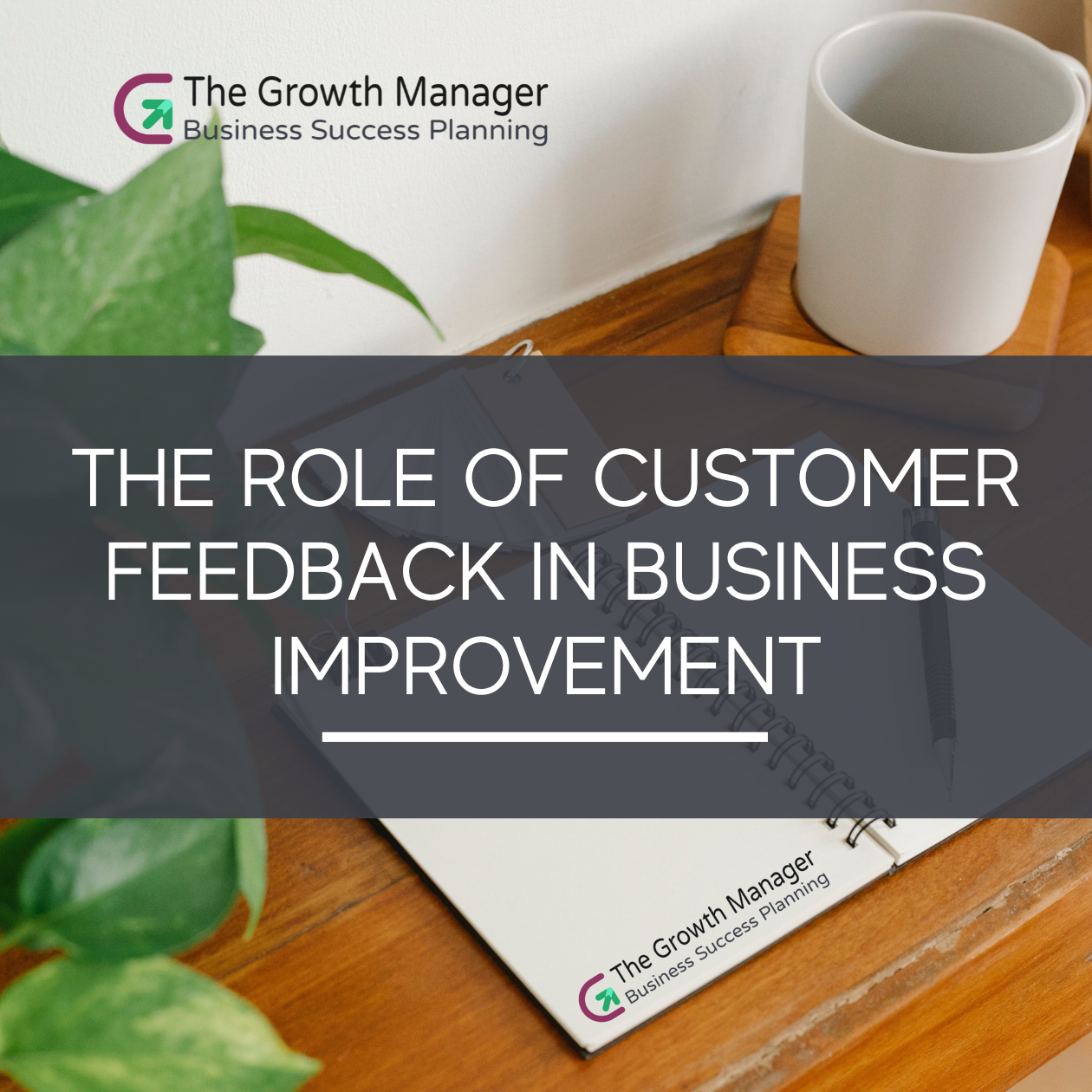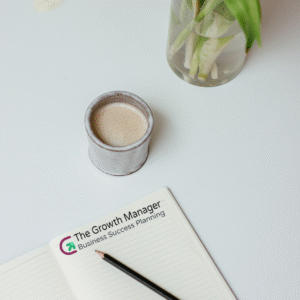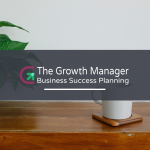Turning Listening into Lasting Growth
You’re wrapping up the week when another email lands in your inbox: “Loved the service, but checkout was a bit confusing.” It’s not the first time you’ve heard it. A quick scroll through your latest Google reviews confirms the same: different words, same message. And suddenly, it clicks. The issue isn’t your offer—it’s the experience.
We often see this moment. A small piece of feedback opens the door to significant change, not through guesswork, but through listening—listening—to what your customers are saying.
At The Growth Manager, business growth isn’t just about numbers—it’s about listening, listening to your customers, understanding their experiences, and leveraging their insights to drive business evolution. If you’re looking to improve your business sustainably, customer feedback isn’t just helpful—it’s critical.
Whether you’re a sole trader, startup founder, or established entrepreneur, this blog will help you see customer feedback not as a passive report card but as a strategic tool that drives meaningful growth, refines your offering, and strengthens brand loyalty.
Let’s explore why feedback matters, how to gather and use it effectively, and how to turn insights into actions that help your business thrive.
 Why Customer Feedback Matters
Why Customer Feedback Matters
We’re not just referring to reviews and testimonials when we talk about feedback. Feedback includes any comment, concern, question, or suggestion your customers share. These insights are gold.
1. It highlights what’s working
When customers tell you what they love about your business, it helps you understand what sets you apart—and that becomes part of your brand message and growth strategy.
2. It reveals blind spots
Constructive feedback uncovers areas of friction you may be too close to see. Identifying these pain points enables you to address problems early, refine processes, and minimise customer churn.
3. It shows you care
Asking for feedback and acting on it sends a powerful message: “We value your voice.” This builds stronger customer relationships and trust, a key pillar in modern business growth.
Collecting Effective Feedback
Not all feedback is created equal. To collect valuable insights, it’s essential to be intentional about gathering information.
Feedback Collection Methods
- Surveys: These are ideal for structured input and can be used at various stages of the customer journey. Keep them short, sweet, and specific.
- Live interviews: Whether conducted face-to-face, by phone, or via Zoom, these conversations provide rich, in-depth insights.
- Online reviews: Google, Facebook, and other platforms give you unsolicited yet authentic customer voices.
- Feedback forms: These can be embedded into your website or emails, allowing customers to leave comments on their own terms.
- Social media: Comments, reactions, and DMs often contain candid feedback. Pay attention and engage thoughtfully.
Tips for Designing Feedback Tools
- Ask open-ended questions: “What’s one thing you wish worked better?” is more powerful than “Did you like our service?”
- Mix quantitative and qualitative: For clarity and depth, combine rating scales (1–5) with open-ended boxes.
- Make it timely: Ask for feedback shortly after a purchase, project, or interaction.
Analysing Feedback for Actionable Insights
Collecting data is only half the battle. What you do with it is where the magic happens.
Start with the trends
Instead of reacting to one-off comments, look for recurring patterns. Are multiple people complaining about shipping delays? Are customers consistently praising your personalised service? These themes highlight both problems to address and strengths to build upon.
Use categories to organise
Break your feedback into buckets like:
- Product/service quality
- Customer service
- Delivery/Logistics
- Website experience
- Pricing/value perception
This makes it easier to prioritise changes that have the most significant impact.
Use tools if needed
Platforms like Google Forms, Typeform, Airtable or even a good old spreadsheet can help organise responses. CRM platforms, such as HubSpot or ActiveCampaign, can also store and track customer feedback over time.
Implementing Changes Based on Feedback
Now it’s time to act. Implementation doesn’t mean sweeping change overnight—it means prioritising what matters most and making meaningful progress.
Start with low-hanging fruit
Quick wins show your customers that you’re listening. For example:
- If multiple people find your FAQs confusing, consider rewriting them.
- If your order confirmation emails are unclear, consider revising the wording or adding links to facilitate tracking of your delivery.
Build in long-term improvements
Larger changes—like updating your service offerings or overhauling your onboarding experience—take time. Use your feedback insights to build these into your business growth plan.
Example:
One of our Growth Manager clients, a handmade jewellery business, consistently received reviews stating that shipping took too long. By switching couriers and offering a tracked express upgrade, they reduced delivery time by 3 days and saw a 15% increase in customer retention.
Communicating Changes to Your Customers
One of the most underutilised strategies in feedback integration is telling people what you did with their input.
Why this matters:
- It builds trust
- It increases customer satisfaction
- It turns casual customers into loyal advocates
How to do it:
- Add a “You spoke, we listened” section to your newsletter
- Create social media posts highlighting updates based on feedback
- Personally reply to feedback-givers when you’ve implemented their suggestion
People want to feel heard. When you show them their feedback made a difference, you create a sense of partnership that deepens brand loyalty.
Measuring the Impact of Changes
To determine if your efforts are practical, you need to measure the results.
Key metrics to consider:
- Customer Satisfaction (CSAT) scores
- Net Promoter Score (NPS) – likelihood of a customer recommending your business
- Repeat purchase rate
- Customer churn rate
- Average resolution time (for support-related changes)
Compare these metrics before and after making changes to gauge your improvement.
Keep the loop going
Feedback isn’t a one-time task. Make it a regular part of your business rhythm:
- Run quarterly surveys
- Use feedback forms in your email automation
- Ask for feedback after each project or transaction
This fosters a culture of listening and improvement in your business, which is the foundation of long-term growth.
Why Feedback-Driven Growth Aligns with The Growth Manager
At The Growth Manager, we’re passionate about real, sustainable growth that’s aligned with your audience. That’s why everything we create—from our mentoring sessions to our Growth Guides—is grounded in understanding the consumer journey.
Our approach to business development is simple:
Listen. Learn. Act. Grow.
Feedback is the ultimate tool for applying this philosophy.
When businesses tune into what their audience is saying, they stop guessing and start making decisions that lead to stronger conversions, deeper trust, and lasting results.
Listen to Your Way to Success
Customer feedback isn’t just a checkbox to tick—it’s a business growth strategy. When you create opportunities for feedback, analyse it intentionally, act with purpose and communicate openly, your business becomes more responsive, resilient, and relatable.
Don’t be afraid of criticism. Embrace it. It’s how good businesses become great.
Ready to harness the power of customer feedback?
Our Consumer Sales Journey Guide is a perfect place to start. It walks you through understanding your customers better and creating an experience they rave about.
Explore more of our Growth Guides and Business Templates to build an informed, intentional, and impactful business.
Let’s build growth—with your customers at the centre.






